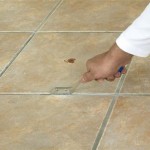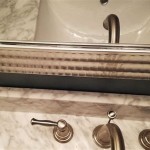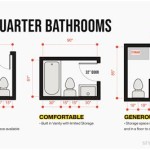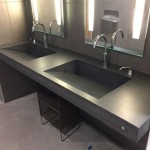How Much Does A Second Bathroom Add To Home Value?
The addition of a second bathroom to a home is a common and frequently considered renovation project. Homeowners often evaluate this upgrade with the expectation of increasing their property value. However, the actual increase in value is influenced by a range of factors, extending beyond the simple presence of an additional bathroom. This article will explore the variables that affect the return on investment (ROI) of adding a second bathroom, delving into the nuances of real estate appraisal and market dynamics.
Understanding the relationship between bathroom count and home value requires a comprehensive assessment. Appraisers don't simply assign a flat rate to an extra bathroom. Instead, they consider how the additional facility meets the needs of potential buyers in that specific market. The size and location of the home, the demographics of the area, and the condition of existing bathrooms all play a part in determining the incremental value of an extra bathroom.
Location significantly impacts the perceived value of a second bathroom. In densely populated urban areas, where space is at a premium, adding any usable square footage, including a bathroom, can be highly valued. Buyers in these markets often place a premium on convenience and minimizing morning congestion. Conversely, in rural areas or locations where large lots are common, the impact of a second bathroom might be less pronounced. The focus may shift to other features, such as land size or outbuildings.
The general rule of thumb suggests that adding a second bathroom can increase a home's value by approximately 4% to 6%. However, this range is highly variable. In some cases, the increase could be significantly higher, while in others, it might be lower or even negligible. It's crucial to consult with a local real estate agent or appraiser to obtain a more accurate estimate based on the specific characteristics of the property and the local market conditions. These professionals have access to comparable sales data and a deep understanding of the preferences of buyers in the area.
The Importance of Home Size and Layout
The size and layout of the home are critical factors that affect the value added by a second bathroom. A small, one-bathroom home that adds a second half-bath is likely to see a greater percentage increase in value than a larger, three-bedroom home that adds a full bathroom but already has one-and-a-half bathrooms. This is due to the fact that the additional bathroom makes a larger percentage difference for the smaller home. Buyers considering a small home are often acutely aware of the limitations of a single bathroom, so the addition of a second is viewed as a significant improvement.
Furthermore, the overall flow and functionality of the home's layout matter. If the second bathroom is awkwardly located or disrupts the natural flow of the living spaces, its perceived value could be diminished. For example, a bathroom located directly off the kitchen or in the middle of a living room might be considered undesirable, even if it adds to the total bathroom count. A well-designed bathroom that is easily accessible from bedrooms or living areas will be more appealing to potential buyers and will therefore contribute more significantly to the home's value.
The number of bedrooms in a home also influences the desirability of a second bathroom. A three-bedroom home with only one bathroom is often considered functionally obsolete by modern standards. Adding a second bathroom in this scenario is much more likely to have a positive impact on value than adding a bathroom to a home that already has a sufficient number of bathrooms for the number of bedrooms. The ratio of bedrooms to bathrooms is a key consideration for many buyers, particularly families.
Homes with master suites often benefit significantly from the addition of an ensuite bathroom. This feature is highly desirable and can substantially increase the perceived value of the home. Buyers are often willing to pay a premium for the privacy and convenience of a master bathroom. If the upgrade is executed well and complements the overall aesthetic of the master suite, it can be a particularly valuable investment.
Cost vs. Potential Return: Budgeting Considerations
Before embarking on a bathroom renovation project, it is essential to carefully analyze the costs associated with the project and weigh them against the potential return on investment. Bathroom renovations can be expensive, involving plumbing, electrical work, tiling, fixtures, and labor costs. The total cost of the project can vary widely depending on the size and complexity of the bathroom, the quality of the materials used, and the location of the home.
Creating a realistic budget is crucial. Obtain multiple quotes from qualified contractors and be prepared for unexpected expenses. It's wise to factor in a contingency fund to cover any unforeseen problems that might arise during the renovation process. Overspending on high-end finishes or overly elaborate designs might not necessarily translate into a higher resale value. Instead, focus on creating a functional and aesthetically pleasing bathroom that meets the needs of potential buyers without breaking the bank.
Consider the potential opportunity cost of the renovation. The money spent on the bathroom renovation could potentially be invested in other areas of the home that might yield a higher return. For example, improving the kitchen, upgrading the HVAC system, or enhancing the curb appeal of the property could all be alternatives that might provide a better ROI. It's important to assess all potential options and prioritize the projects that are most likely to increase the overall value and marketability of the home.
Furthermore, the timing of the renovation can also affect the potential return. Renovating a bathroom during a strong seller's market, when demand is high and inventory is low, might allow the homeowner to recoup a larger percentage of the renovation costs. Conversely, renovating during a slow buyer's market might make it more difficult to recoup the full investment. Understanding the local real estate market trends is critical to making informed decisions about home renovations.
Market-Specific Considerations and Buyer Preferences
The local real estate market and the preferences of buyers in that market exert a significant influence on the value added by a second bathroom. In some markets, a second bathroom is considered a necessity, particularly for homes with multiple bedrooms. In these areas, failing to have a second bathroom could put the home at a competitive disadvantage compared to other properties with similar characteristics.
Researching comparable sales data in the area is essential. Analyze the selling prices of homes with similar characteristics, focusing on the number of bathrooms. This will provide valuable insights into the market's valuation of additional bathrooms. Consult with local real estate agents who have experience in the area. They can offer expert advice on the features that are most sought after by buyers in the market and provide guidance on how to maximize the home's value.
Consider the demographics of the area. Family-oriented neighborhoods tend to value additional bathrooms more highly than areas with a larger proportion of single occupants or retirees. Buyers with young children often place a premium on having multiple bathrooms to accommodate the needs of their families. Understanding the target demographic for the home is crucial to making informed decisions about renovations.
Buyer preferences can also be influenced by the style and design of the home. A modern, updated bathroom might be more appealing to buyers than an outdated or poorly maintained bathroom. Investing in modern fixtures, attractive tiling, and good lighting can significantly enhance the perceived value of the bathroom. However, it's important to balance these improvements with the overall style of the home and the preferences of buyers in the market.
Ultimately, the decision of whether or not to add a second bathroom should be based on a careful analysis of the factors discussed above. While adding a second bathroom can potentially increase a home's value, it's not a guaranteed return on investment. By considering the size and layout of the home, the cost of the renovation, the local real estate market, and the preferences of buyers, homeowners can make informed decisions that maximize the potential value of their property.

How Much Value Does Another Bathroom Add Checkatrade

How Much Value Does A Bathroom Add In 2024 Badeloft

How Much Does An Extra Bathroom Add To The Value Of A House Resi

How Much Value Does A Bathroom Add In 2024 Badeloft

6 Benefits Of Adding A Bathroom To Home Budget Dumpster

Add Value With An Extra Bathroom Jon Pritchard Ltd

Best Worst Renovations To Add Value Your Property

Here S How Much It Costs To Add A Second Bathroom Your New York City Apartment And The Best Place Put

How Much Does It Cost To Add A Bathroom 2024 Data

How Much Does It Cost To Add A Bathroom 2024 Data
Related Posts







